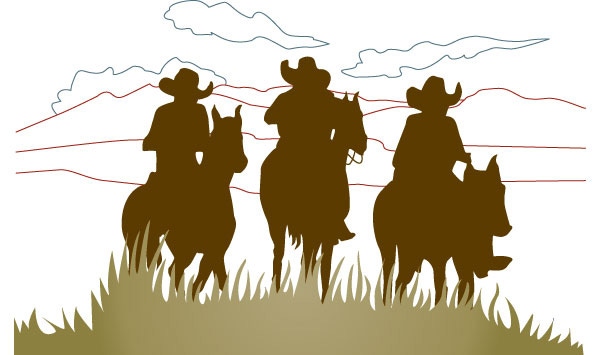Leachman’s Industry Game Plan: Work Together To Move Forward
One seedstock breeder says that progress in meeting consumer expectations comes by connecting the information dots between genetics, the cow-calf operation and the feedlot.

“Some guy 50 years ago stood in front of a bunch of chicken breeders and said ‘We’re going to make chickens convert better than 2:1 and be twice as big as they are now at half the age.’ And everybody laughed,” says seedstock breeder Lee Leachman of Wellington, CO.
But here’s the thing: they did it.
Leachman is convinced the beef industry can make similar progress. He’s also convinced that the beef industry can dramatically improve the economically relevant traits that will keep both cow-calf operations and feedlots in business, while simultaneously increasing consumer acceptability of the end product.
In fact, he’s convinced that accomplishing those twin goals will be essential if cattlemen are to remain competitive with their main competition – pork and poultry. What’s more, he thinks that beef, and those who produce it, will be more competitive by working together
Working Together
“How can we compete successfully with pigs and chickens if our industry is broken into chunks and we don’t communicate and send value signals? We can’t,” Leachman says “We won’t be competitive. There’s a better way to do that and that’s by working together.”
By “working together,” he means connecting the dots between the genetics supplied by the seedstock segment, the cow-calf segment where those genetics hit the ground, and the feedlot where they’re going to be finished into a product acceptable to the consumer. “At the end of the day, we’re going to sell our product, which is beef, and we’re going to have to compete for our share of the plate,” Leachman says. “Are they going to eat beef tonight or are they going to eat chicken or pork or fish or something else?”
Subscribe now to Cow-Calf Weekly to get the latest industry research and information in your inbox every Friday!
Consumer acceptability, he says, hinges on carcass quality, principally marbling. Colorado State University did some research using people knowledgeable about food, such as chefs, and asked them to give a thumbs up or thumbs down on steaks from carcasses falling into the various USDA Quality Grades. According to Leachman, Standard marbling got a thumbs up 15% of the time; Select got thumbs up 29% of the time; the bottom third of Choice got a 62% favorable rating; the upper two-thirds of Choice, which most premium brands specify, got an 85% favorable rating; and Prime nailed down a 99%.
Leachman says the target for his program, which is a value-added initiative in cooperation with Decatur County Feedyard in Oberlin, KS, is for 70% of the cattle to hit the upper two-thirds of Choice or Prime. “The old target was 70% Choice,” he says. “But 70% of the cattle at a 62% acceptability rating isn’t good enough for me. I want to shoot higher than that.”
That means, he says, the beef industry needs to aim for more cattle hitting Prime. “There are not many that will do that today, but they will.” Taking a page from the chicken boys, Leachman stood in front of a group of cow-calf producers recently and predicted that in 10 years, he could show them cattle that land 50% of the carcasses in Prime. “And they will look like the cattle we see today, and convert better than the cattle we see today.”
Nobody laughed.
You Might Also Like:
Despite Record Prices, Push The Pencil For the Best Selling Option
Retail Beef Prices May Shock Consumers Less Than Expected
About the Author(s)
You May Also Like


.png?width=300&auto=webp&quality=80&disable=upscale)
